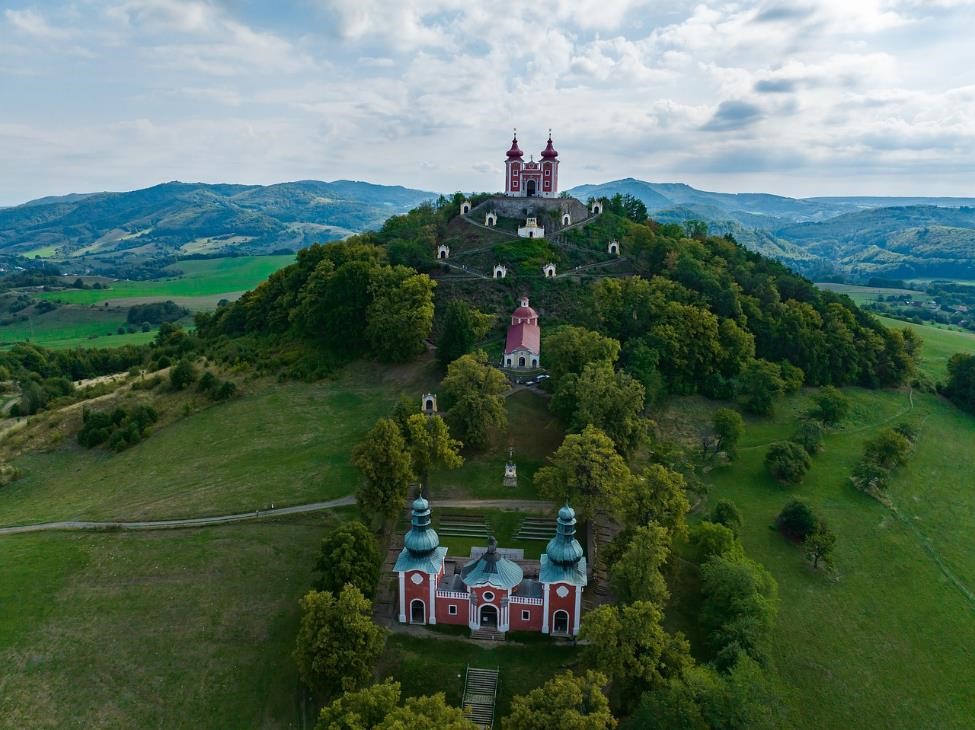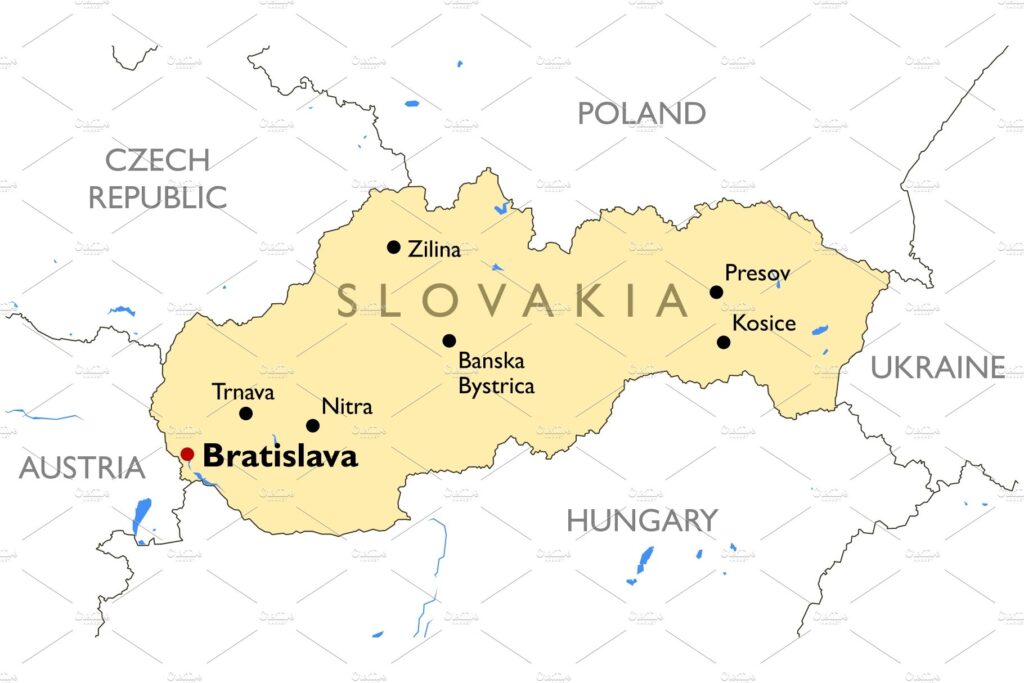Slovakia
Grades 5+
 Take a deep breath as you step off the train in the quaint town of Banská Štiavnica.
Take a deep breath as you step off the train in the quaint town of Banská Štiavnica.
The setting sun paints the sky in a dreamy palette of oranges, pinks, and purples. The town is surrounded by rolling hills with lush trees and colorful wildflowers. The castles and Renaissance palaces, nestled among the green hills, make the town look almost like a postcard.
Are you going to let this seemingly peaceful site fool you?
The area is actually a monster in disguise.
It was an immense geological feature. With a diameter of several hundred miles and standing over three miles in high, it easily dwarves any active volcanoes we know today. Approximately 15 million years ago, this behemoth erupted with an incredible force, collapsing in on itself. With a force of 100,000 Hiroshima bombs, it sent lava, rocks, and volcanic ash hurtling into the sky for up to 24 miles.
 The intense pressure and heat of the eruption melted rocks, and the gold present in the earth’s core was then released. Gold particles slowly cooled and hardened into veins. Over thousands of years, these veins gradually became exposed through erosion. Gold particles were washed away into streams, rivers, and creeks, becoming the target of gold prospectors. It’s estimated that, since the 17th century, 50 to 200 tonnes of gold were mined, with 100 tonnes still in the ground. This abundance of gold – and other precious metals, such as silver – enabled the Austro-Hungarian Empire to amass great wealth and gain a strong political power. Until 1918, Slovakia was one of the countries that were part of this powerful empire. Then, with the Czech Republic, it was Czechoslovakia until 1992, when it formed its own independent nation.
The intense pressure and heat of the eruption melted rocks, and the gold present in the earth’s core was then released. Gold particles slowly cooled and hardened into veins. Over thousands of years, these veins gradually became exposed through erosion. Gold particles were washed away into streams, rivers, and creeks, becoming the target of gold prospectors. It’s estimated that, since the 17th century, 50 to 200 tonnes of gold were mined, with 100 tonnes still in the ground. This abundance of gold – and other precious metals, such as silver – enabled the Austro-Hungarian Empire to amass great wealth and gain a strong political power. Until 1918, Slovakia was one of the countries that were part of this powerful empire. Then, with the Czech Republic, it was Czechoslovakia until 1992, when it formed its own independent nation.
The supervolcano also left a large caldera surrounded by a ring of mountains. At the center of this caldera lies the present-day town of Banská Štiavnica, a testament to the immense power of volcanoes and nature.
The Štiavnica Volcano has been inactive for a long time. Does that mean it’s dead? It is only asleep and can wake up again at any time and wreak havoc as it did in its past.
Štiavnica Caldera may be one of Slovakia’s most unique locations, but it’s certainly not the only one. For example, Bratislava, the capital and largest city in Slovakia, stretching along the banks of the Danube River. It is the only capital in the world that borders two countries – in this case, Austria and Hungary.
To the west, Vienna, capital of Austria and one of the most vibrant cities in the world, is only 30 miles away, whereas Budapest, the beautiful capital of Hungary, lies 90 miles to the southeast. Three distinct countries, each with their own unique cultures, languages, and history, all converge here.
Slovakia Activity 1
Using the essay above, write a question for each of the six wh forms.
Slovakia Activity 2
Create a syntax tree for the following:
- Are you going to let this seemingly peaceful site fool you?
- Does that mean it’s dead?
- Which of the three countries – Austria, Hungary, or Slovakia – would you most like to visit? (Careful! This one is tricky.)